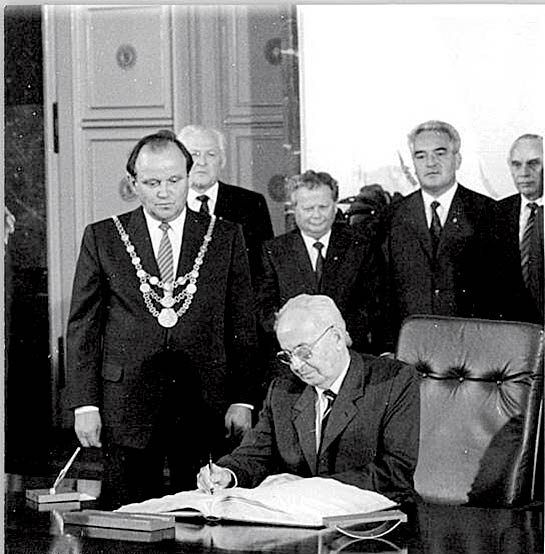Five decades ago, the document "Lessons from the Crisis Development in the Party and in Society after the 13th Congress" was published as a separate brochure.
It was adopted by the Plenary Assembly of the Central Committee of the Communist Party at its congress on 10th and 11th December 1970. It is a relatively unknown anniversary. However, whoever has been affected by this document doesn’t enjoy recalling it.
From the human face to totalitarianism
In the 1960s, in Czechoslovakia started destalinization and socialism easing. With the election of Alexander Dubček as the first secretary of the Central Committee of the Communist Party, democratization tendencies were being promoted, which found significant support among the population. Censorship was removed, rehabilitation of the victims of the 1950s regime continued, and freedom of travel began to be enforced. The Soviet Union reluctantly looked at the changes while issuing several warnings. The Prague Spring and the building of the so-called of socialism with a human face resulted in the invasion of Warsaw Pact troops into Czechoslovakia. Their "temporary" stay survived the fall of communism and ended with the departure of the last convoy in mid 1991.
Fight against democracy
After the resignation of Alexander Dubček, the Communist Party was trying to restore the original order in the party. The 'Lesson' was preceded by a more radical material, "How to Make a Counter-Revolution." In addition to political purges, there were new lessons from the crisis. Its goal was to eliminate the so-called anti-socialist forces, consolidate ties with the Soviet Union, secure the party's leading role and start normalization. During the normalization, the party leadership relied on the Soviet Union as to establish its legitimacy.
Normalization adoption completed the first wave of the so-called consolidation process and the country embarked on the path of normalization. It marked Czechoslovak society and became an unchanging instruction on how to think, speak and act until November ´89. It politically ostracized and socially segregated many for the regime "uncomfortable" citizens.
Revenge Act Manual
The Revenge Act manual served the ruling elite to (des)interpret the events of 1968 in a politically and ideologically manner. That determined the official truth as a recipe to follow. The heroes of the Prague Spring became enemies of socialism, opportunists and citizens who disagreed with the document "thanks" to the "right-wing, revisionist elements". It legalized the occupying presence of Soviet troops in Czechoslovakia as "fraternal aid to friendly armies." It was serving as binding unquestionable mantra for two decades that didn’t not allow for critique. It was the ideological basis for repression and revenge by the enemies of socialism among the citizens.
BOX
A word of a historian
Historian Patrik Dubovský from the Institute of the Memory of the Nation says about the Lesson: “The management did not change even during its rebuilding, so this document could never change. In addition, in 1969 and 1970, the party also threw out the intellectual cadres it had. It replaced them with working cadres who did not have enough education or experience. These people did not sign up for the rebuilding nor created any new document, they only recycled the Lesson until its self-destruction in 1989."

Gustáv Husák signing in the golden guest book of Easter Berlin in 1987.